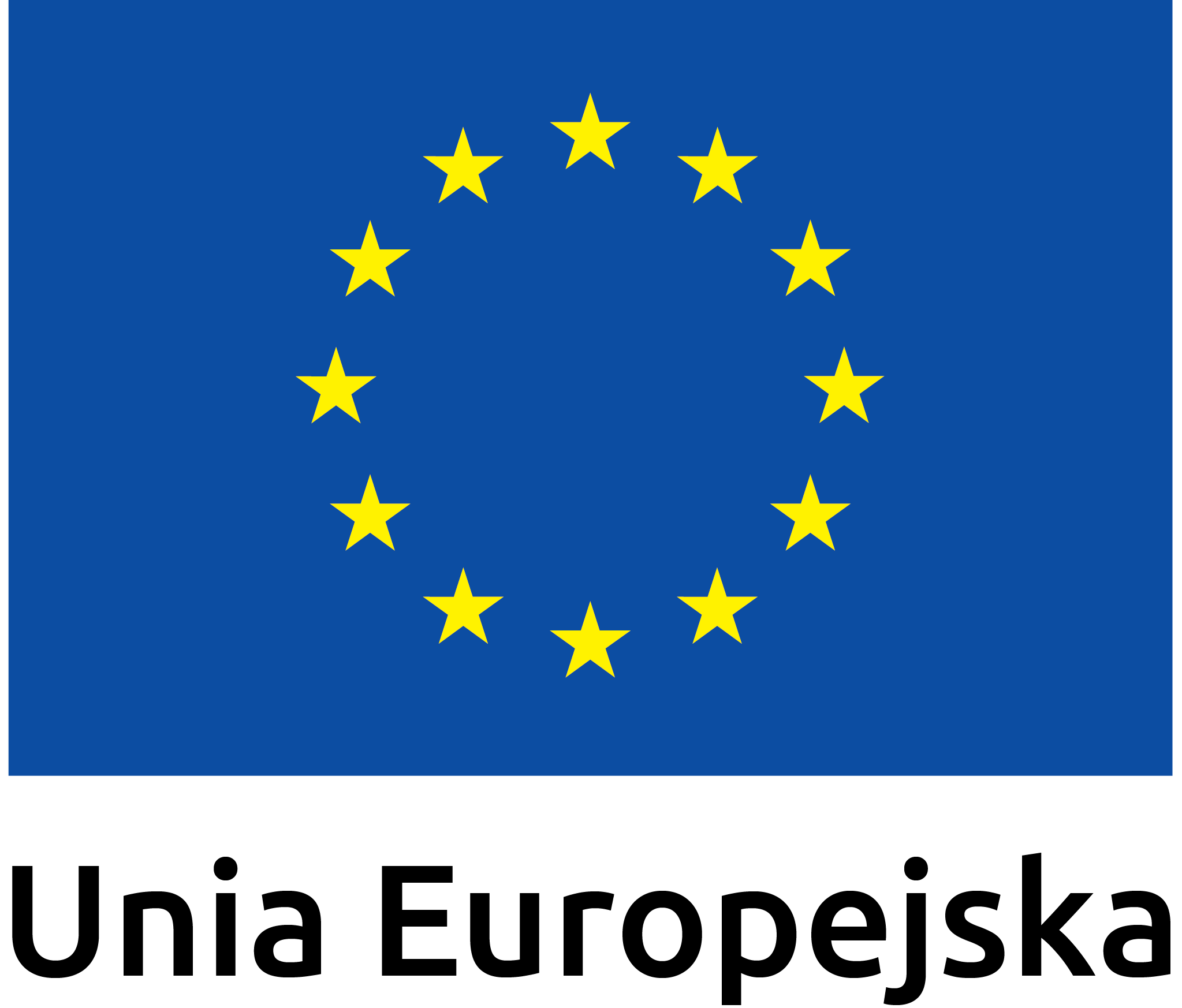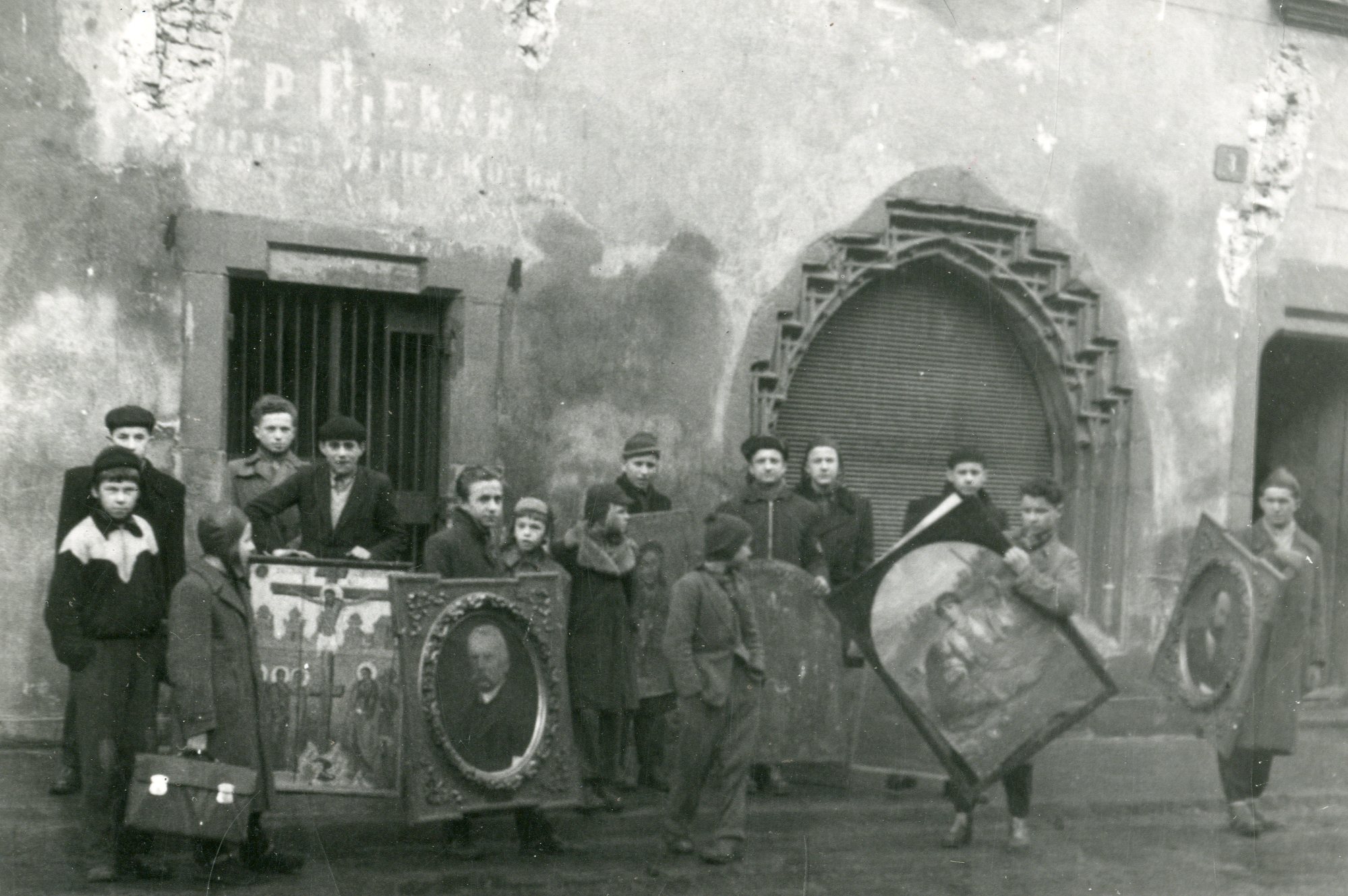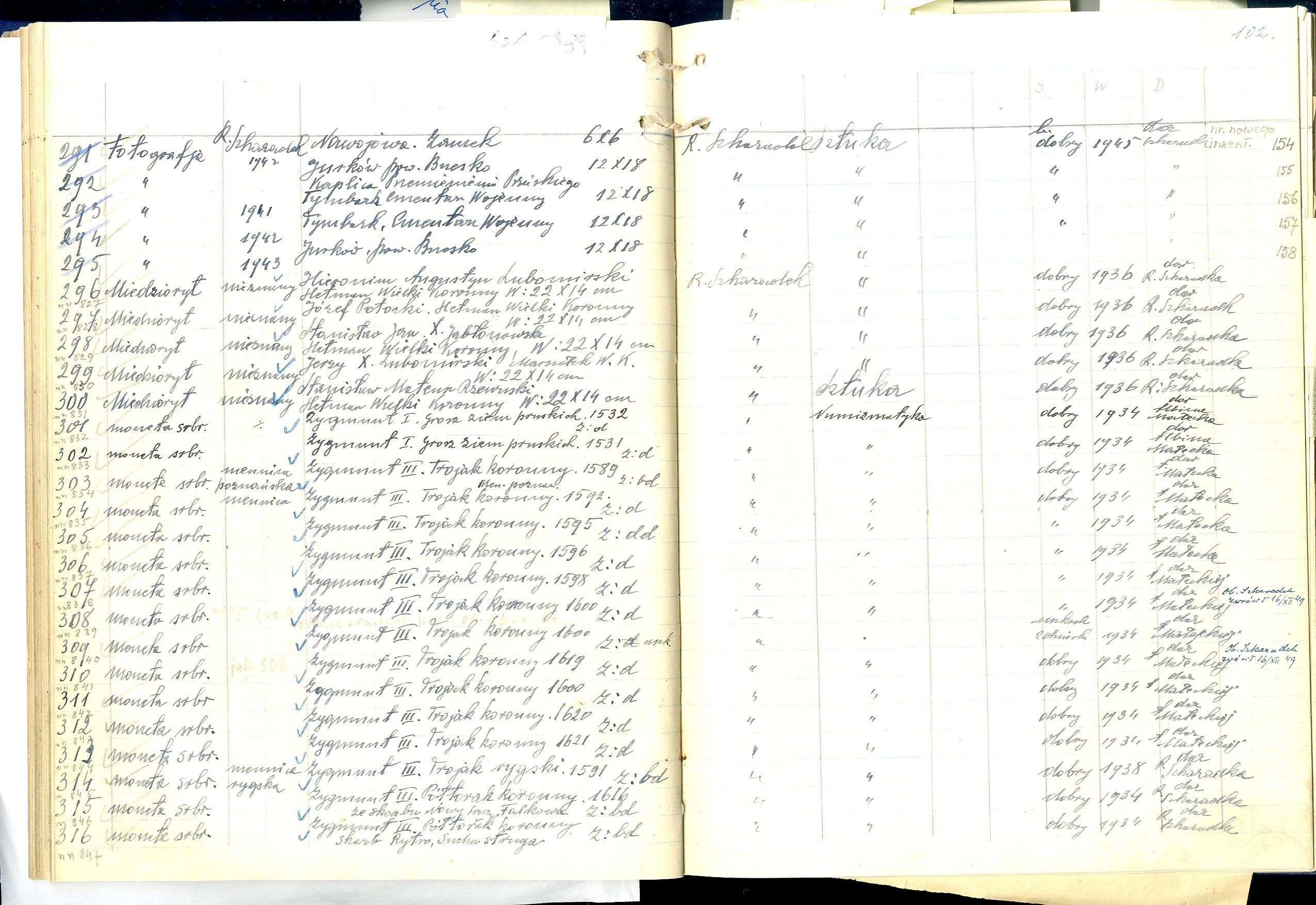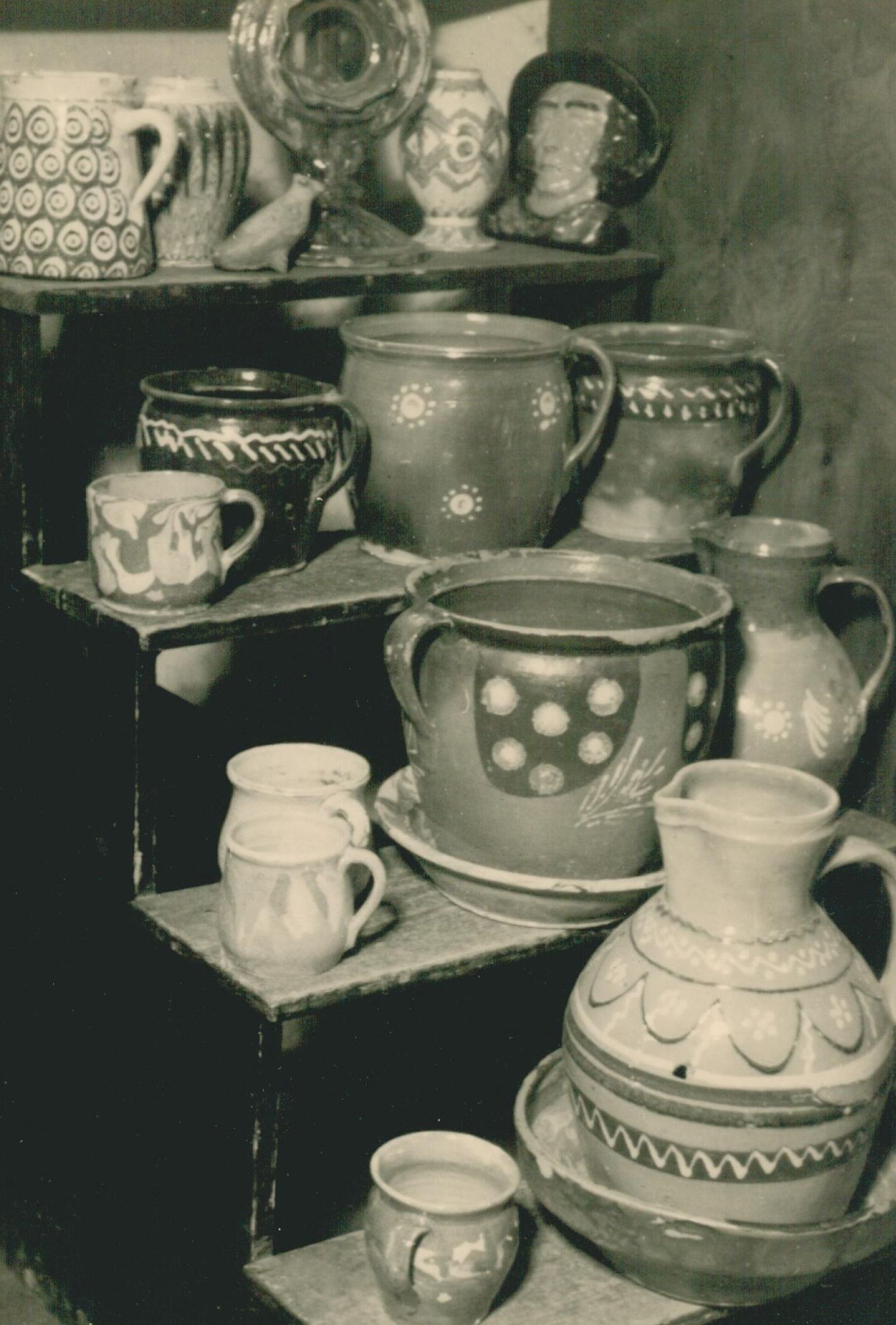Exhibition
Lost, saved
"Lost, Saved" is an exhibition held on the 85th anniversary of the opening of the Museum of the Sądecka Region in the Nowy Sącz castle. We will show items that fortunately survived the German occupation and became the nucleus of new collections of the facility reactivated after the war. We will also acquaint you with the results of research conducted by our employees in Polish archives, the aim of which was to outline war losses in the collections of the Nowy Sącz museum.
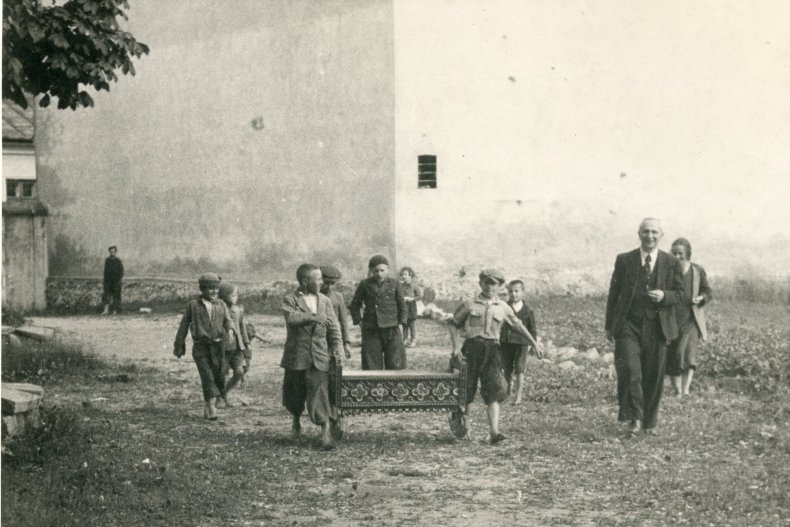
Young people carrying a cradle from Podegrodzie to the museum, on the right Roman Szkaradek
On Friday, August 12, the Museum of the Nowy Sącz Land will be opened at the post-Jagiellonian castle in Nowy Sącz, bringing together collections of all areas of life in this region. The museum includes ethnographic, historical, church art and contemporary art departments. The historical section includes art depicting the Legions' fights in Podhale, near Marcinkowice. The church art department, probably the richest, includes about 800 exhibits. Paintings with religious content from the 15th, 16th and 17th centuries occupy two large rooms. Works by folk artists predominate here, demonstrating excellent painting techniques and providing a rewarding field for ethnographers. […]. The section of folk sculpture and liturgical vestments is interesting, consisting of 2,000 exhibits. Ceramics, folk costumes, household appliances, and cottage products fill the rest of the museum's rooms. The Museum of the Sądecka Region was organized by curator Roman Szkaradek and prof. Romuald Rule. Over the course of eight years, they collected approximately 4,000 exhibits of not only high historical and museum value, but also material value. The museum fills 12 great chambers of the former Jagiellonian castle.
Ekspress Poranny Małopolski, No. 219, Volume XVII, August 10, 1938
Ekspress Poranny Małopolski, No. 219, Volume XVII, August 10, 1938
A modest part of the Museum's considerable collection survived the German occupation and the explosion of the castle. The exhibits gave rise to an institution established in 1946 called the Museum in Nowy Sącz. New objects were quickly added to the saved collections - some of them were gifts, some were purchased. Only a small percentage of objects kept by private individuals returned to the Museum's collections.
This exhibition and the accompanying catalog are being carried out on the 85th anniversary of the opening of the seat of the Museum of the Sądecka Land in the Nowy Sącz castle, as part of the project entitled "The history of the creation and dissolution of the collections of the Museum of the Sądecka Region and the post-war fate of the Museum in Nowy Sącz" co-financed by the Ministry of Culture and National Heritage from the Research of Polish War Losses program.
This exhibition and the accompanying catalog are being carried out on the 85th anniversary of the opening of the seat of the Museum of the Sądecka Land in the Nowy Sącz castle, as part of the project entitled "The history of the creation and dissolution of the collections of the Museum of the Sądecka Region and the post-war fate of the Museum in Nowy Sącz" co-financed by the Ministry of Culture and National Heritage from the Research of Polish War Losses program.
The key activities in this project were research conducted in the Archive of New Records in Warsaw, the Archive of the District Museum in Nowy Sącz, the Archives of the National Heritage Institute, the Departmental Archive of the Ministry of Culture and National Heritage, the National Archives in Kraków and its local branch in Nowy Sącz.
The assumption of the research work was to estimate the number and value of missing objects and those that returned to the collections after the war. The result of these activities is a catalog presenting the current state of research and a selection of exhibits for the exhibition.
The assumption of the research work was to estimate the number and value of missing objects and those that returned to the collections after the war. The result of these activities is a catalog presenting the current state of research and a selection of exhibits for the exhibition.
The exhibition will present surviving pre-war exhibits currently in the collections of four substantive departments - Ethnographic, Historical and Archaeological, Art, Contemporary Folk and Non-Professional Art, as well as in the Museum's scientific archive. These will include: sculptures, paintings, embroidery, chasubles, printing plates, graphics, drawings, folk costumes, a cradle, a chapel, color printing, coins and medals.
Visitors will also see archival materials: photographs, posters, official documents, leaflets and occasional prints, and souvenirs that will present the history, people, places, events and museum exhibitions.
Some of the exhibits will be shown for the first time, and some come from permanent exhibitions in the Gothic House, the Main Building and the Sądecki Ethnographic Park.
Visitors will also see archival materials: photographs, posters, official documents, leaflets and occasional prints, and souvenirs that will present the history, people, places, events and museum exhibitions.
Some of the exhibits will be shown for the first time, and some come from permanent exhibitions in the Gothic House, the Main Building and the Sądecki Ethnographic Park.
Co-financed by the Minister of Culture and National Heritage from the Cultural Promotion Fund - a state earmarked fund, as part of the "Research on Polish war losses" program
